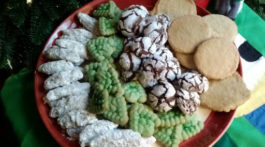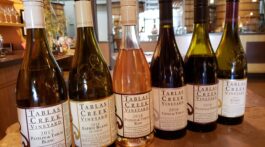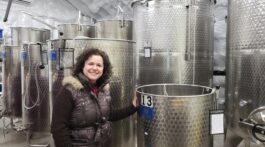Choosing a wine can be a complicated, frustrating, annoying and intimidating business. It can also be a fun, interesting and satisfying learning experience with a delicious drink as the reward. Lots of information is available to help pick a wine, and a good thing too, since the majority of wine stores offer a bewildering bounty of choice. What can be done to distill the field down to a manageable number of options?
Information is the key. It’s readily available and often helpful. I enjoy reading articles about wine – most of the popular food magazines have one or two per issue. These will help you to know what’s new and current in wines and garner some specific suggestions too. Wine focused publications offer a more in-depth look at wine regions (up and coming as well as established), personalities in the business, and page after page of wine ratings with tasting notes.
Online there are countless web sites and blogs, both independent and retailer sponsored, offering wine opinion, advice and ratings. Some are technical and others chatty – look for one that speaks to you. There are also sites that offer wine for direct sale with tempting over-the-top gushing descriptions of small production wines that may be hard to find elsewhere. Connecticut is not an easy state for mail order wine, but these sites can still be fun to read.
Many publications offer ratings on a 100 point scale – which are often quoted in the stores on tags or “shelf talkers” near the bottles. Ratings, although professionally and carefully done, are still just an opinion. Read the comments to see if they are appealing. At least one influential reviewer has been deemed so powerful that winemakers are said to adjust their winemaking style to suit his taste. A backlash against this has developed touting small production “authentic wines” made by families according to local custom, not in an “international style” to please the critics.
Jeff Barbour at New Canaan Wine Merchants has developed his Dollar – Point Quotient formula to help understand the value of wines rated 89 points or higher. He counts each rating point over 89 and divides into the price per bottle to yield his value index. For example Chateau Lafite Rothschild 2009 was awarded 98 points by the widely respected Wine Advocate. It’s cost is $2150 per bottle. So the formula 2150/9 = $238, the cost of each point over 89. On the other hand, he is currently offering Azienda Argiano Toscana Rosso IGT “Solengo” a Super Tuscan with a rating Wine Advocate rating of 96 for $67 a bottle. The cost per point here is 67/7 = $9.57 – a much better value per point. Both wines are expensive, but one seems to be a much better buy. Of course, you need to be in sync with the reviewer and enjoy the same types of wines. After all, the point score is just an opinion.
There’s very little bad or spoiled wine out there. Over the years, I have had some that have the musty basement aroma of a wine with a tainted cork. Screw caps and other non-cork closures are a way for the wine industry to avoid this. I’ve also had wines that smell like a loaf of bread or taste like turpentine, but those were a long time ago. Wine making technology today has all but eliminated flawed wines.
However, the more vexing question is, does the wine taste good and meet your expectations? Around the world, winemaking styles produce vastly different wines from the same grape. Sauvignon Blanc, for example, makes aromatic, refreshing and zesty wines in France. The same grape in New Zealand is known for citrusy flavors and sharp acidity. In California, both styles are available as well as some with grassy, herbal flavors. In addition, some winemakers are aging their Sauvignon Blanc in oak barrels, for yet another flavor profile. How do you know what to buy?
First of all, keep tasting! You never know when you’ll find a new wine to add to your list of favorites. Restaurant wines by the glass can be a good opportunity to look further afield. At Rouge Brasserie & Oyster Bar, a slice of France in Greenwich, we discovered Domaine Saint-Lannes, a delightful white wine from the Côtes de Gascogne made principally with the not-often seen Colombard grape. I would have never found this wine on my own, but the folks at Rouge did it for me. I went right out and ordered a case. Recently in New York at the charming Sel et Poivre restaurant, I rediscovered Trimbach Riesling. Made on the border between France and Germany by 13 generations of the Trimbach family, its a delightfully fresh and pleasing dry wine. Recently awarded 89 points by the Wine Enthusiast and selling for about $16, it’s a good buy on Jeff Barbour’s Dollar – Point equation.
The best bet for picking wines, is to be informed and follow the advice of a good retailer. Read up, get to know a few shops, and take their recommendations. Their job is to taste widely and learn your preference. If you like the wine and see the value, go back for another try. The fun is in the journey. You won’t hit a home run every time, but every at bat will give some pleasure and expand your wine horizons.












No Comment